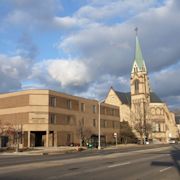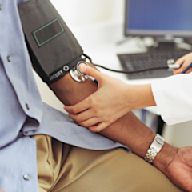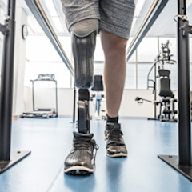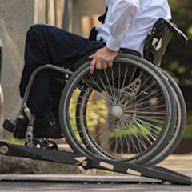Search results
Discover more placesNear Columbus, OH
Refine results for Doctors & Clinics
Mar 7, 2024 · Physical therapy is a common treatment that can help you recover after an injury or surgery, or manage symptoms from a health condition that affects how you move. It’s a combination of exercises, stretches and movements that’ll increase your strength, flexibility and mobility to help you move safely and more confidently.
Feb 19, 2024 · Physical therapists treat many different conditions, including arthritis, balance problems, carpal tunnel syndrome, gait problems, fractures, frozen shoulder, sports injuries, recovery from stroke, and many other things. If you think you need physical therapy, check with your insurance company to see if you need a referral and find a provider ...
- Physical Therapy for a Broken Ankle
- In the hospital
- What to Expect From Herniated Disc Physical Therapy
- Understanding If You Need Physical Therapy
- physical therapists
- Chiropractors vs. Physical Therapists: Differences and How to Choose
- Benefits and Considerations for In-Home Physical Therapy
- Occupational vs. Physical Therapy: Patient Questions
- 4 Gifts You Should Avoid Giving Your Physical Therapist
- What Is Pediatric Physical Therapy?
Physical therapy (PT) is care that aims to ease pain and help you function, move, and live better. You may need it to: Relieve pain. Improve movement or ability. Prevent or recover from a sports ...
Physical therapy, also called physiotherapy, is a program to help people return to full strength, function and mobility after a sickness, an injury or surgery. Physical therapy is a nonsurgical treatment option to correct a medical problem. Physical therapy can also help someone with a disability remain active and independent as long as possible.
People also ask
What is pediatric physical therapy?
Who provides physical therapy services?
What is physical therapy & how does it work?
- Overview
- How many types of physical therapy are there?
- What are the different techniques in physical therapy?
- What is the most popular type of physical therapy?
- Why would someone need physical therapy?
- What to look for in a physical therapist
- Bottom line
There are numerous types of physical therapy, and the field continues to evolve with the emergence of new specialties and techniques.
Whether you’re grappling with pain, recovering from an injury, or hoping to improve your athletic abilities, physical therapy (PT) provides a comprehensive approach to address these concerns and more.
While it’s difficult to provide an exact number, there are potentially dozens of different types of PT. The field of PT is continuously evolving, and new approaches and specialties emerge over time.
Plus, physical therapists often develop their own unique techniques or treatment methods based on their expertise and experiences.
Here are some common types of PT:
•Orthopedic PT: Orthopedic PT focuses on musculoskeletal injuries and conditions, such as fractures, sprains, and joint replacements.
•Neurological PT: Neurological PT deals with neurological disorders like stroke, Parkinson’s disease, spinal cord injuries, and multiple sclerosis.
•Sports PT: Sports PT targets athletes and sports-related injuries, aiming to enhance performance and help guide recovery.
Physical therapists use various techniques to address different conditions and achieve specific treatment goals.
Here are some common techniques used in PT:
•Therapeutic exercise: This involves a range of exercises and movements designed to improve strength, flexibility, endurance, balance, and coordination. Therapists prescribe specific exercises based on your specific needs and condition.
•Manual therapy: Manual therapy techniques are hands-on techniques performed by the physical therapist to mobilize joints, manipulate soft tissues, and improve joint mobility.
•Electrotherapy: Electrotherapy involves the use of electrical stimulation (e-stim) to promote tissue healing, relieve pain, and improve muscle function. Examples include transcutaneous electrical nerve stimulation (TENS) and electrical muscle stimulation.
•Heat and cold therapy: The application of heat and cold can help reduce pain, inflammation, and muscle spasms. Hot packs, cold packs, ice massage, and contrast baths are commonly used in PT.
Orthopedic PT may be the most sought-after type of PT. It addresses injuries, postoperative rehabilitation, and chronic conditions affecting your bones, muscles, joints, ligaments, and tendons
Sports PT is also highly sought after due to the popularity of sports and the prevalence of sports-related injuries. Sports physical therapists work with athletes to help them enhance performance as well as prevent and recover from injuries.
Here are some common situations where PT can be beneficial:
•Injury recovery: PT aids in recovering from injuries, reducing pain, and improving mobility.
•Chronic pain management: PT helps manage chronic pain, increase flexibility, and improve daily function.
•Rehabilitation after surgery: PT supports postoperative recovery, improving function and mobility.
•Neurological conditions: PT addresses neurological conditions, enhancing balance, coordination, and mobility.
•Age-related issues: PT improves mobility, strength, and independence in older adults.
When looking for a physical therapist, there are several key factors to consider:
•Qualifications and credentials: Ensure that the physical therapist is licensed and has the necessary qualifications and certifications to practice.
•Experience and specializations: Consider the therapist’s experience in treating your specific condition or injury.
•Communication and listening skills: A good physical therapist should be an attentive listener who takes the time to understand your concerns, goals, and medical history.
•Personalized approach: Look for a therapist who takes a personalized approach to treatment, tailoring programs to your specific needs and goals.
•Positive reviews and recommendations: Read reviews or seek recommendations from friends, family, or healthcare professionals.
PT is a valuable healthcare profession that plays an important role in promoting recovery, pain relief, and improved functionality for individuals with various conditions. There are many types of PT in order to address differing demographics and injuries.
To see a physical therapist, you may need to consult with a healthcare professional for a referral. You can then look for a reputable PT clinic in your area and schedule an initial evaluation appointment to discuss your condition and treatment options.
- Traci Pedersen
Physical therapy ( PT ), also known as physiotherapy, is a healthcare profession, as well as the care provided by physical therapists who promote, maintain, or restore health through patient education, physical intervention, disease prevention, and health promotion. Physical therapist is the term used for such professionals in the United States ...
Apr 21, 2022 · Physical therapy is performed by licensed physical therapists and physical therapy assistants. Some physical therapists specialize in certain areas, such as wound management, pediatrics or sports.





























